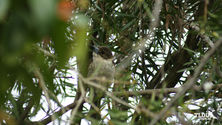
Shoppers Feedback:
Jan 17, 2017
Hello Ros,
I have now paid the invoice, but I would like to write to you just to say a big THANK YOU for getting me the Penguin!
The ChatterMate Penguin became a nice memory for me when I was in New Zealand, and I am so greatful to you for arranging so that I could have it! :-)
Thank you so much!!!!!!!!!!!
Regards,
Malin
Hi Ros,
Many thanks for your very kind email. I really appreciate your prompt reply!
I appreciate your advice regarding the decorations and customs. These are a gift for my daughter’s exchange student family so when she returns home on the weekend I will show her and see if she loves them as much as I do!
Thanks so very much again - I am truly grateful for your kind assistance.
Kind Regards
Bernadette
Ros,
Thanks again for the great customer service. It's a refreshing change!
Best regards,
Trevor
Hey Roz,
Thank you for your emails. Just loved my first order. The cute little Aussie bush critters are going to be used for an office Christmas decoration. My colleagues also liked them and talked about making an order to your site. I'll send you a photo when completed.
I'll be ordering more to send to my daughter's host family in America.
Fabulous service from you.
Kind regards,
Michelle
Thankyou. Order arrived today. One very happy grandson with his new beastly binoculars.
Regards,
Irene
- Home
- Wild Wonders
- Shop
- Aromas of Australia
- Australian Made
- Books
- Book Marks
- Christmas Decoration Sale
- Christmas Decorations
- Clocks
- Drink Holders
- Garden & Outdoor
- Gift Wrapping & Cards
- Home & Giftware
- Jewellery
- Keyrings
- New Products
- Pencils & Pen Holders
- Photo Frames
- Plush Toys
- Plush with Sound
- Sheepskin Rugs
- Stationery
- Stone Carvings
- Toys & Games
- Travel Goods
- Wedding
- Wild Figurines
- Wildlife Safety Products
- Wind Chimes
- Wine Charms
- View All Products
- Wildlife
- Australiana
- Explore
- Contact Us
Grey Butcherbird

Quick Facts
| Length: | 27 cm |
| Height: | - |
| Weight: | 100 grams |
| Colour: | - |
| Habitat: | Wooded areas including suburban areas. Inland areas denser forests are preferred |
| Food: | Small animals, birds, lizards, insects, fruits and seeds |
| Predators: | - |
| Status: | Secure in all states and territories in Australia |
The adult Grey Butcherbird has a black crown and face and a grey back, with a thin white collar. The wings are grey, with large areas of white and the underparts are white. The grey and black bill is large, with a small hook at the tip of the upper bill. The eye is dark brown and the legs and feet are dark grey. Both sexes are similar in plumage, but the females are slightly smaller than the males. Young Grey Butcherbirds resemble adults, but have black areas replaced with olive-brown and a buff wash on the white areas. The bill is completely dark grey and often lacks an obvious hook. They are sometimes mistaken for small kingfishers.
The Black Butcherbird, from the rainforests and mangroves of the north of Australia is all black, with a blue-grey bill. The widespread Pied Butcherbird, is larger and boldly marked in black and white.
Grey Butcherbirds range from mid-eastern Queensland, through southern Australia, including Tasmania, to northern Western Australia. There is an isolated population in the Kimberley and the northernmost parts of the Northern Territory.
Grey Butcherbirds are found in a range of wooded habitats, including suburban areas. In inland areas, the birds tend to favour the denser forests.
Grey Butcherbirds are aggressive predators. They prey on small animals, including birds, lizards and insects, as well as some fruits and seeds. Uneaten food may be stored in the fork or a branch or impaled. Grey Butcherbirds sit on an open perch searching for prey which, once sighted, they pounce on. Most mobile prey is caught on the ground, though small birds and insects may be caught in flight. Feeding normally takes place alone, in pairs or in small family groups.
Butcherbirds get their name from their habit of hanging captured prey on a hook or in a tree fork, or crevice. This 'larder' is used to support the victim while it is being eaten, to store several victims or to attract mates.
The Grey Butcherbird's nest is bowl-shaped, and is made of sticks and twigs, lined with grasses and other soft fibres. It is normally located within 10 m of the ground. The eggs are incubated by the female and the young birds are fed by both parents. The young birds will remain in the breeding territory for about a year, and help the parents raise the young of the following season.
Last Updated: Thursday 9th January, 2014
BUSH e-TELEGRAPH
Signup for our monthly newsletter the "e-Telegraph"
Quick Links
Home | The Beginning | About The Land Down Under | Wild Wonders | Advertise on Wild Wonders | Christmas Decoration Sale | Christmas Tree Decorations | Drink Holders | Plush with Sound | Stone Carvings | Wildlife Wine Charms | Freebies | Australian Wildlife | Help Our Wildlife | Australiana | Photo of the Month | Explore The Land Down Under | Contact Us | Legal Notices

